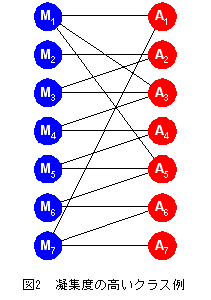Object-Oriented Metrics: LCOM https://www.computing.dcu.ie/~renaat/ca421/LCOM.html
Object-Oriented Metrics: LCOM
LCOM (Lack of Cohesion of Methods) as revised by Brian Henderson-Sellers in [HEN96]
CK originally proposed LCOM
Chidamber & Kemerer proposed the original LCOM Lack of Cohesion metric in [CHI94]
Given n methods M1, M2, …, Mn contained in a class C1 which also contains a set of instance variables {Ii} . Then for any method Mi we can define the partitioned set ofP = {(Ii, Ij) | Ii ∩ Ij = φ} and Q = {(Ii, Ij) | Ii ∩ Ij ≠ φ}
then LCOM = |P| - |Q|, if |P| > |Q|
=0 otherwise
LCOM is a count of the number of method pairs whose similarity is zero.
CK example from [HEN96] LCOM as defined above


Based on M's as methods and A's as instance variables both of the above graphs of classes derive an LCOM measure of 8.
However it seems clear that the graph on the right is a lot more intuitively cohesive.
Henderson-Sellers revised LCOM*
Henderson-Sellers revises the LCOM metric to normalise it for the number of methods and variables that rae present in the class:

Where the number of methods is m and the number of instance variables ( attributes) a set of {Aj} (j=1, 2, …, a). Let μ(Aj) be the number of methods which access each datum.
With this new measure the mteric is simplified an normalised.
References
- [CHI94] Chidamber, S., R., Kemerer, C., K., A Metrics Suite for Object Oriented Design, IEEE Trans. on Software Eng., Vol.20, No.6, June 1994.
- [HEN 96] Henderson-Sellers, B., Object-oriented metrics : measures of complexity, Prentice-Hall, pp.142-147, 1996.


